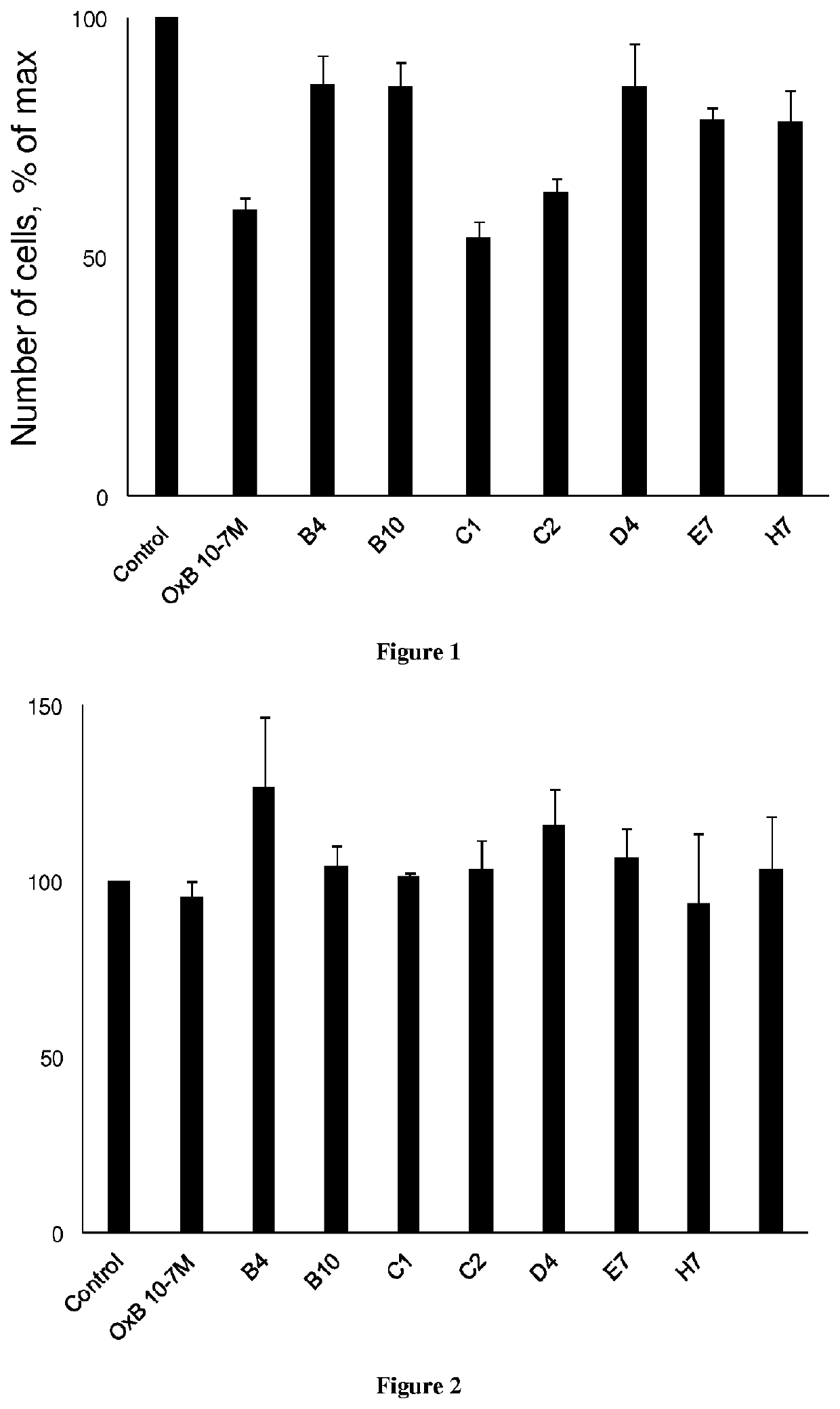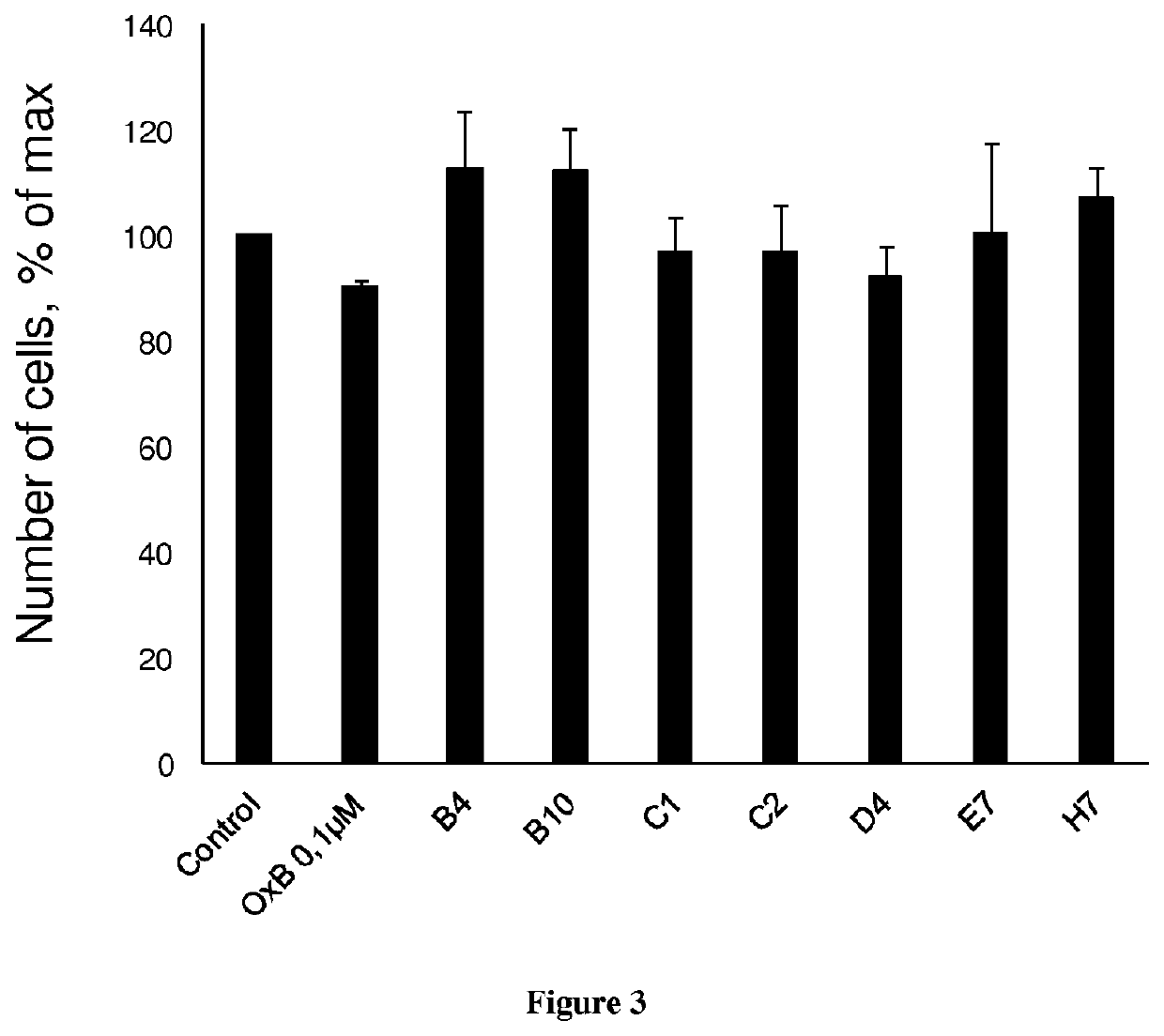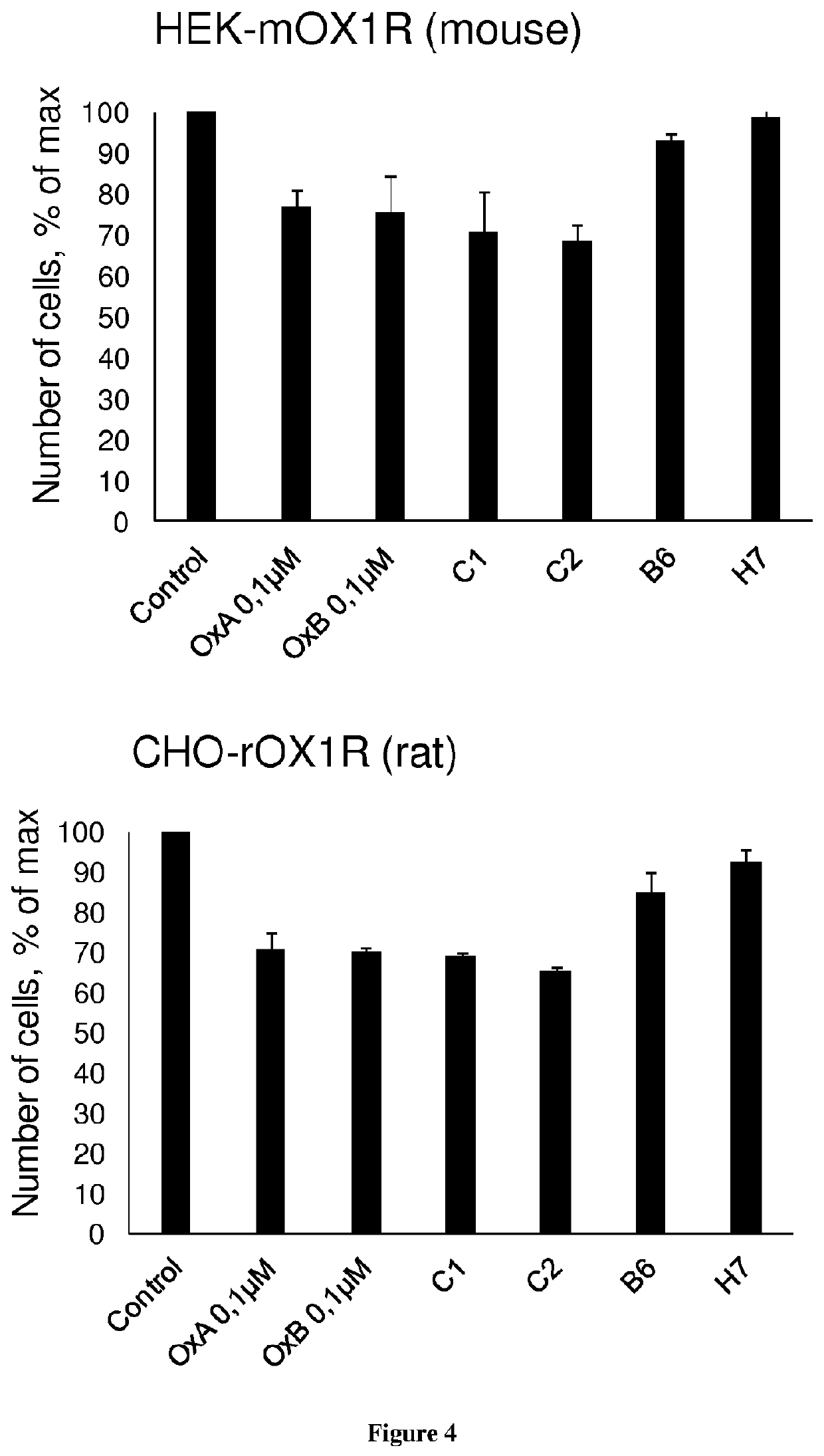Human monoclonal antibodies against orexin receptor type 1
a technology of orexin receptor and monoclonal antibodies, which is applied in the field of human monoclonal antibodies against orexin receptor type 1
- Summary
- Abstract
- Description
- Claims
- Application Information
AI Technical Summary
Benefits of technology
Problems solved by technology
Method used
Image
Examples
example 1
[0139]The development of antibodies directed against OX1R were produced by a phage display strategy and the antibody selection was performed by using HEK and HEK stably expressing OX1R (HEK-OX1R) cell lines. As a first step, a batch of 7 different antibodies named B4, B10, C1, C2, D4, E7 and H7 was tested for their ability to inhibit the cell growth of HEK-OX1R. Cells were incubated with 0.1 μM of OxB or antibodies for 48 h in culture medium and then cells were counted in order to estimate the cellular growth. As shown in FIG. 1, C1 and C2 reduced the HEK-OX1R cell number of about 46%±3 and 37±3% respectively as compared to orexin-B (OxB, 0.1 μM) which reduced of 40±3% the cell number (FIG. 1). In contrast, B4, B10, D4, E7 and H7 have a weak effect on cellular growth (range from 14% to 20%) as compared to OxB (FIG. 1). To determine the specificity of the cellular growth inhibition induced by these antibodies, we test it on HEK cells which does not expressing OX1R. As shown in FIG. 2...
example 2
[0142]The inventors have tested the ability of C2 antibody to inhibit the tumor development of xenografted nude mice with the human colon adenocarcinoma cell line, HT-29. After subcutaneous injection of 1.5×106 HT-29 cells in mice, animals were treated by 2 intraperitoneal (ip) injection / week of Orexin-A (100 μg / injection corresponding to 1.4 μmoles of orexin-A / Kg) or two doses of C2 antibody (200 μg / injection or 50 μg / injection corresponding to 0.065 μmoles / Kg and 0.02 μmoles / Kg, respectively). Control was determined by ip injection of 100 μl of PBS. The experiment was conducted during 45 days and the tumor volume was estimated by measuring the short and long axes of developedtumors each ⅔ days. As shown in FIG. 8, the inventors observed that HT-29 cells induced a tumor volume of about 1600±120 mm3 (Day 43) in the absence of treatment (black circles). In contrast, injection of C2 antibody (black triangle) strongly reduced the tumor development of about 60% (tumor volume #650±98 mm3...
PUM
| Property | Measurement | Unit |
|---|---|---|
| diameters | aaaaa | aaaaa |
| volume | aaaaa | aaaaa |
| tumor volume | aaaaa | aaaaa |
Abstract
Description
Claims
Application Information
 Login to View More
Login to View More - R&D
- Intellectual Property
- Life Sciences
- Materials
- Tech Scout
- Unparalleled Data Quality
- Higher Quality Content
- 60% Fewer Hallucinations
Browse by: Latest US Patents, China's latest patents, Technical Efficacy Thesaurus, Application Domain, Technology Topic, Popular Technical Reports.
© 2025 PatSnap. All rights reserved.Legal|Privacy policy|Modern Slavery Act Transparency Statement|Sitemap|About US| Contact US: help@patsnap.com



